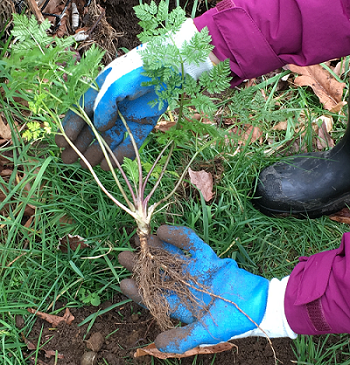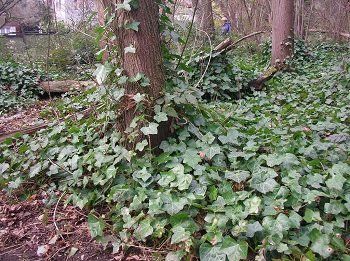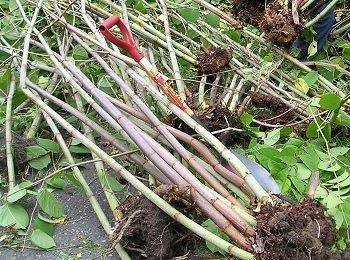Picking your Weed Battles
Plants bring us health, happiness and so many other good things, but sometimes they cause problems. Then we call them weeds and the fight begins. It can be tempting to go to war against all plants that don’t behave the way we want them to. Instead, I like to pick my battles and focus where I can do the most good and protect the things I value the most.
Here are a few of my top picks for invasive weeds to target.
This deadly relative of the carrot has an uncanny tendency to show up in vegetable gardens. Young poison hemlock plants look similar to carrot greens. Examine the stems closely. If you see reddish-purple spots, you’ve probably got poison hemlock and should pull it up (with gloves on, of course).
Older poison hemlock plants are much taller, but they can be confused with fennel or anise plants. The tall, stout stems of flowering poison hemlock plants are even more obviously marked with the purple-red splotches and also have a whitish, waxy coating. If this isn’t enough, take a sniff.
Poison hemlock has an unpleasant musty odor.
You will often find poison hemlock growing on trails or roadsides, but it can show up anywhere. I have seen it growing near school playgrounds, on farms, bike trails, community gardens, and many other places. It is somewhat frightening that a plant that is so poisonous is so widespread.
If you love trees, birds and wildflowers, but don’t like rats, then English ivy is not your friend. In forests, it carpets the ground and keeps plants and tree seedlings from growing. It also grows up trees, adding huge amounts of weight and increasing the risk the tree will die early or get blown over.
Ivy is also great habitat for rats. In fact, you can think of ivy as a welcome mat for rats. People should remove it around their houses, and especially near the foundation or eaves where rats can get in, or where children play.
Ivy comes in many different varieties, but all are evergreen with lobed leaves and creeping stems. The flowers aren’t showy, but in the fall, they form in clusters on side shoots that have shiny, unlobed leaves. In the winter, ivy produces round, black fruits that some birds eat, but are poisonous to people.
Japanese, Bohemian and giant knotweed (collectively known as invasive knotweed) were brought here originally as ornamental plants, but outside of their native homeland, the problems they cause far outweigh their benefits. On the positive side, new shoots are edible, honey bees like the flowers, and they grow incredibly quickly.
On the negative side, knotweed doesn’t know when to stop growing. It has very invasive roots that damage septic systems and foundations, and is extremely difficult to get rid of. On top of that, knotweed invades rivers, crowds out beneficial trees and plants, increases erosion, and harms salmon restoration efforts.
Knotweed identification is not difficult. Plants are tall and the stems look kind of like bamboo, but not woody, and the leaves are broad and sort of heart-shaped. In late summer, it produces sprays of little white flowers. New knotweed shoots are reddish and look similar to asparagus (and can even be eaten). But don’t be fooled; the innocent-looking sprouts quickly grow into dense, tall stands that overwhelm other vegetation.
Sasha Shaw has been teaching and learning about noxious weeds in Washington for over twenty years. She
began working with the King County Noxious Weed Control Program in 1997, and is currently serving as
their education specialist. Learn more about invasive and noxious weeds at kingcounty.gov/weeds.












